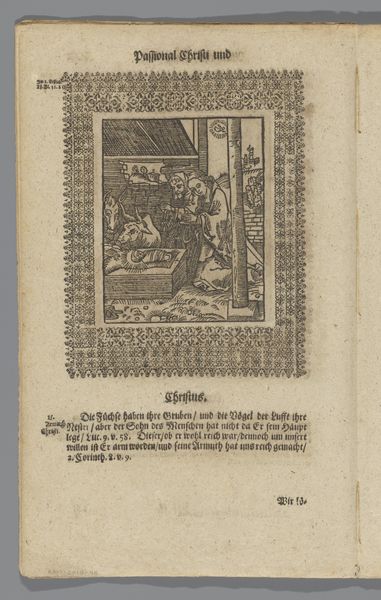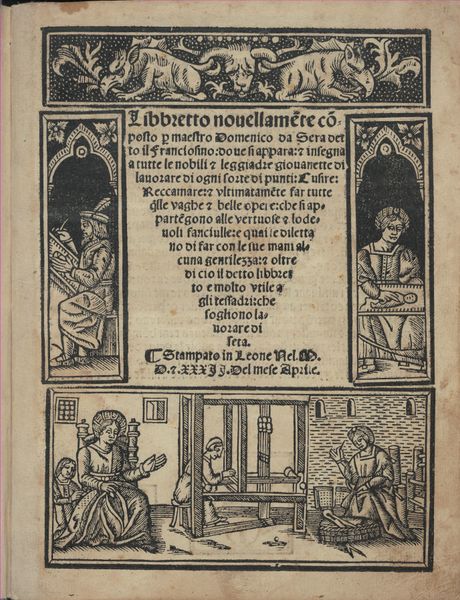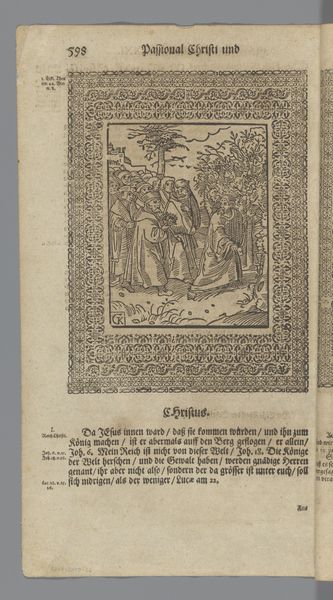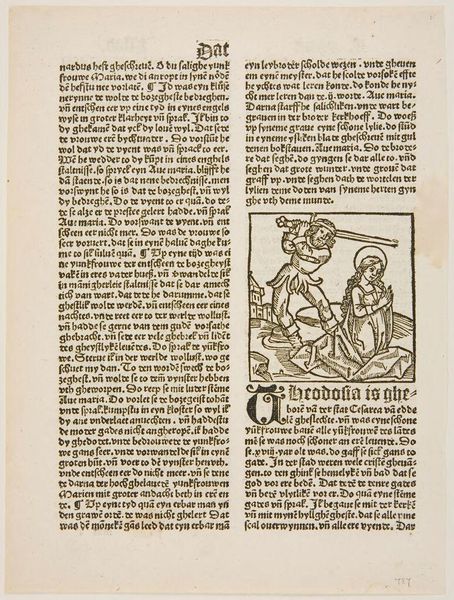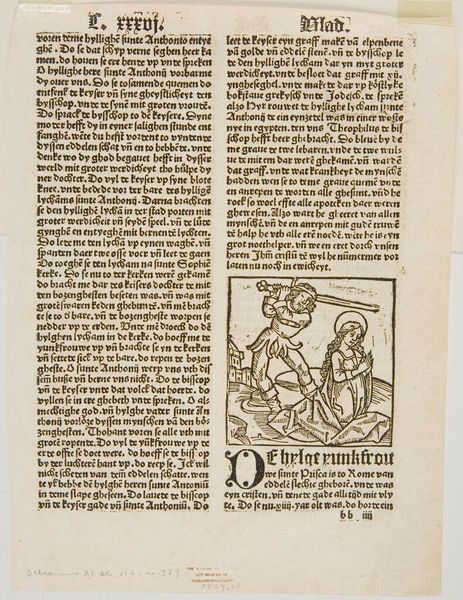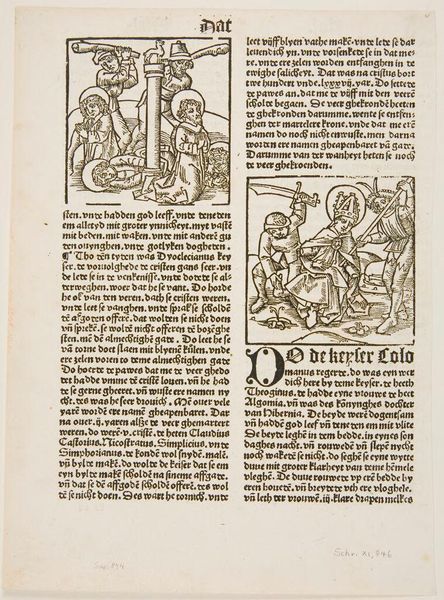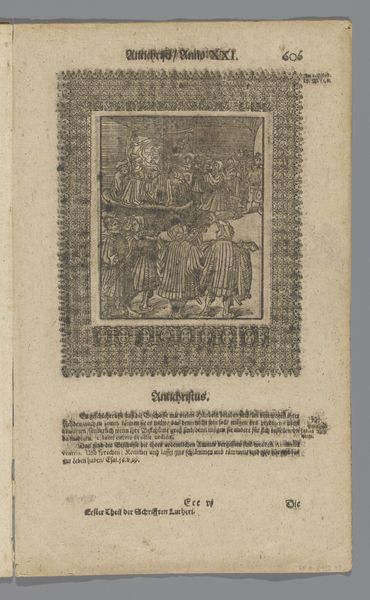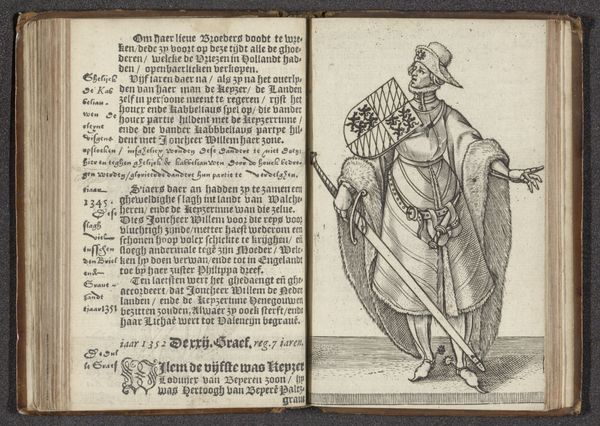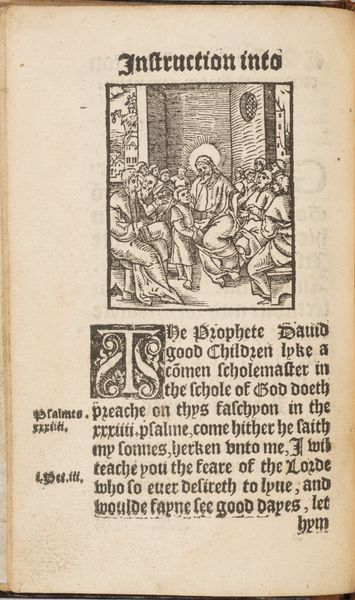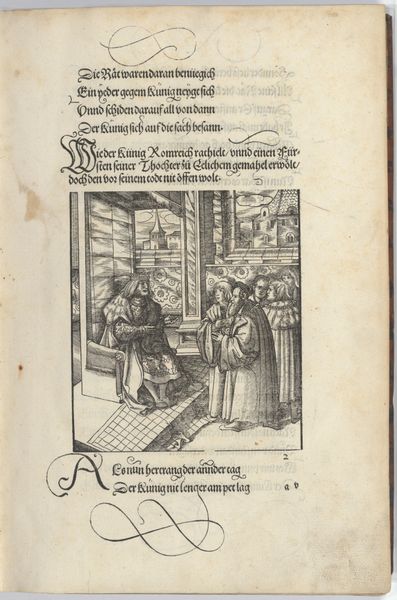
drawing, print, woodcut
#
drawing
#
narrative-art
# print
#
book
#
sketch book
#
figuration
#
personal sketchbook
#
sketchwork
#
pen-ink sketch
#
woodcut
#
northern-renaissance
Dimensions: Overall: 7 11/16 x 5 7/8 in. (19.5 x 15 cm)
Copyright: Public Domain
Curator: We're looking at a page from "Ein new kunstlich Modelbuch...", a woodcut print by Peter Quentel, created in 1544. It's currently held at the Metropolitan Museum of Art. Editor: Wow, it's like stepping back in time! It's so precise and the image below is so peaceful. There’s almost a minimalist feel to it, even though it's crammed with detail in the description above the figures. Curator: Absolutely. This book is significant in understanding the gendered divisions of labor in the 16th century, particularly within artisanal practices. The three women depicted are engaged in needlework, emphasizing the role of women in the production of textiles and other decorative arts. Editor: They look almost serene. There's something so calming about them working in sync and creating intricate patterns, despite the archaic look. The architecture also is so very interesting and in opposition to their serene demeanor, almost imposing even. Curator: Indeed. It's a powerful visual statement on female artistry and labor. It reflects the social and economic importance of these skills, while also highlighting the limited opportunities available to women at the time, reinforcing the idea that their creativity was often confined to domestic spaces. Editor: I suppose it also shows their freedom through creativity and resourcefulness? And that creativity did not have to be shouted from the rooftops but could just be in the moment? Curator: Precisely, it provides valuable insight into the intersection of gender, class, and craft in the Northern Renaissance. Seeing this piece of art helps us reframe narratives around labor and consider how we continue to assign artistic and manual skills. Editor: It’s a remarkable reflection, bridging artistry with a contemplative examination of gender roles that persists centuries after its creation. This seemingly simple piece invites us into a profound dialogue across time and perspectives.
Comments
No comments
Be the first to comment and join the conversation on the ultimate creative platform.
